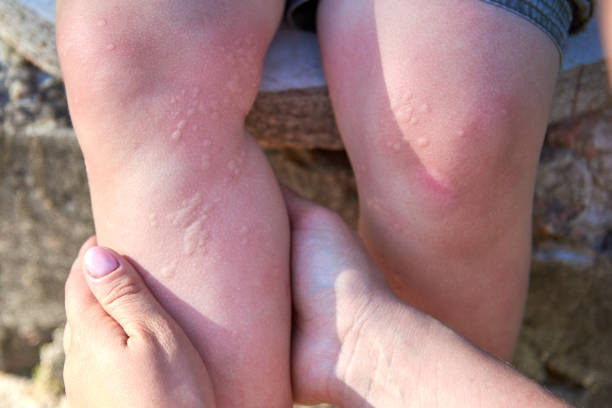Top 10 Types of Baby Rash to Be Aware About

In my previous article on the best massage oils for babies, I mentioned that a baby’s skin is very delicate compared to an adult’s.
All your baby needs is a single trigger to get a horrible breakout of rashes. What’s worrying about baby rashes is that, at times, you might struggle to identify the primary cause. Why? Every baby has a distinct skin type, which makes it hard to pinpoint the cause of a skin rash and the perfect treatment.
First, we must define the different kinds of skin rashes a baby might contract, how to tell them apart, and the treatment options. Let’s dive right and discuss baby rashes more.
What Causes Baby Rashes?
One thing that makes it hard to treat baby rashes is because the causes are different. These are the most common causes of baby rashes.
1. Infections
Infections on the baby’s body might result in rashes on the skin. Although fungal infections are the biggest culprits, viral infections also cause baby rashes.
Baby rashes caused by fungal infections are oval with a smooth centre and red, scaly borders with a ring-like appearance.
On the other hand, rashes caused by a virus might be red, with raised bumps, flat areas, blisters, or all of these features. Depending on the virus causing them, viral rashes clear within a few days or weeks.
2. Irritants
When your baby comes into contact with certain things, its skin can easily become irritated, causing rashes.
The most common irritants that cause baby rashes include soaps, baby wipes, lotions, poop, sunscreen, detergents, drool, and pee. Any time the baby comes into contact with the irritant(s), they develop rashes on their skin.
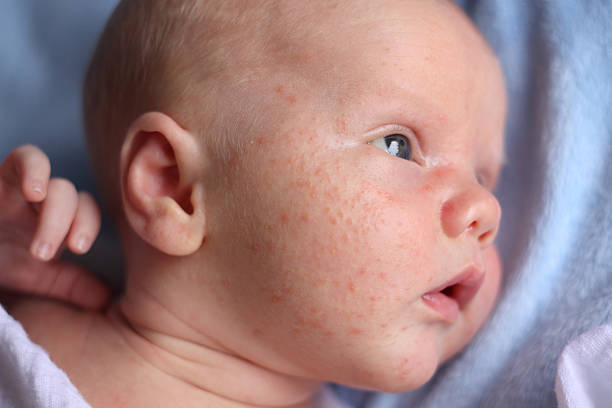
Symptoms of Baby Acne
Pimples- The pimples appear as tiny red dots with whiteheads.
Persistence- Baby acne can last up to several months.
Irritated cheeks—Baby acne is prominent on the cheeks. It can also be found on the baby’s back, nose, scalp, and even chest.
Types of Baby Rash
These are the top ten types of baby rash that you should pay attention to:
1. Baby Heat Rash

Baby heat rash is another common form of rash your baby might develop. This type of rash occurs when the baby’s sweat glands clog and trap sweat under the skin.
Your baby is likely to develop a heat rash during summer or when you overdress them, increasing the warmth on their body.
Irritation and tiny red bumps on the chest, neck, shoulders, and head are the most common symptoms of a baby heat rash.
You can prevent heat rash in babies by dressing them lightly during the warm season.
2. Baby Diaper Rash
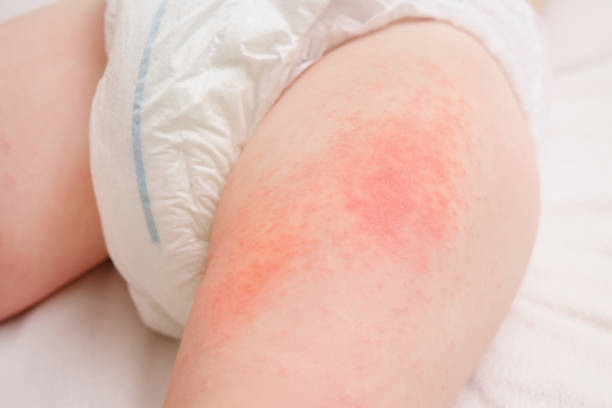
As a first-time parent, you are likely to deal with diaper rash from time to time. Diaper rash in babies occurs when the baby’s skin gets irritated from wet diapers or friction with the fabric.
When a baby pees or poop on themselves and stays for long without diaper changes, they develop rashes.
You can identify diaper rash by red patches on the baby’s buttocks and puffy, warm skin.
Prevention of Baby Diaper Rash
As a parent or caregiver, you should easily deal with diaper rash by using these tips:
- Frequently changing the baby’s diapers.
- Drying the baby’s skin before putting them in another diaper.
- Applying diaper paste on their bottoms minimizes friction between the skin and the diaper.
3. Meningitis Rash

Meningitis refers to a condition that develops when the lining around the brain and spinal cord (called meninges) gets inflamed. In extreme cases, the inflammation might block blood flow, leading to serious complications such as blood flow.
Meningitis can be caused by virus or bacteria. Regardless of the cause, it might lead to a rash breakout in babies. Unlike other baby rashes, the meningitis rash looks red or purple, with a bruise-like appearance.
Symptoms of Meningitis Rash in Babies
You can identify meningitis rash in your baby due to these symptoms:
Rashes- The rashes are spread throughout the body and are red or pink. The rashes can sometimes appear purple, with spots similar to broken capillaries or tiny bruises.
Lethargy- A baby with meningitis rashes appears tired and does not fancy playing.
High fever- When your baby has meningitis rashes, they will always have above-normal temperatures.
Vomiting- Besides vomiting, meningitis rash also makes babies lose their appetite and become easily irritable.
How to Clear Meningitis Rash in Babies
After learning the health risks meningitis poses to children, you might rush to find the best treatment options.
Viral meningitis clears itself in less than two weeks.
On the other hand, bacterial meningitis requires antibiotic injection. However, your baby can only get the injection after their immunity improves significantly.
In serious cases, the meningitis rash might call for hospitalization. To avoid this, if you suspect your baby has meningitis, take them to hospital as soon as possible.
4. Strep Rash
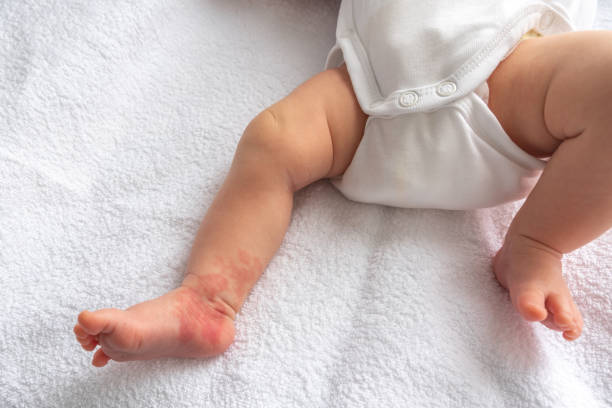
Strep rash is a rare type of rash that also affects rash. It is contagious, and babies can contract it by interacting with people exposed to strep throat.
Strep Rash Symptoms in Babies
Bright red skin- The rashes leave your skin with bright red circle patches, which might also be beefy-looking.
Blisters and scabbing- Your baby is likely to develop blisters and scabs, which might be itchy or painful.
5. Chicken Pox
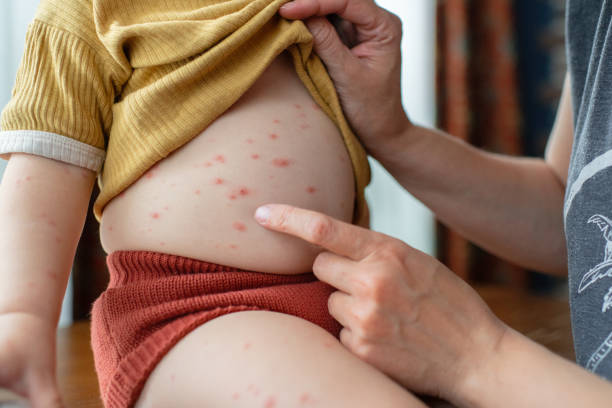
Chickenpox is a highly contagious ailment that was considered fatal before a vaccine was developed. Babies with chickenpox develop a blister-like rash throughout their skin.
It is easy to identify chickenpox by the intensity with which the baby scratches its itchy skin and the high body temperatures.
6. Baby Drool Rash
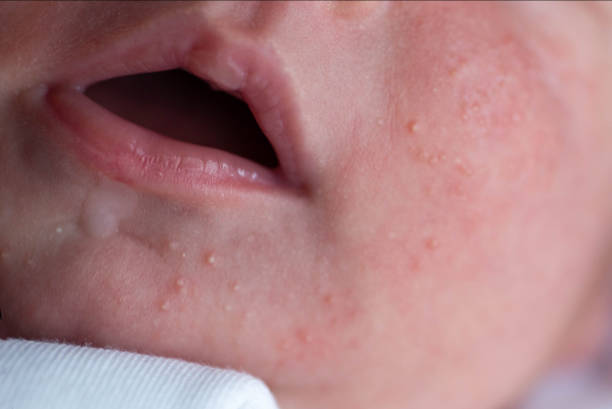
In my article on drooling in babies, I mentioned drool rash that leaves their cheeks, chin, and neck with rashes. Most babies develop a drool rash between 3 and 6 months when drooling peaks.
Drool rash makes the skin flaky and dry, giving it an unpleasant look. You can counter drool rash by constantly drying any excess drool on your skin. Another way to minimize the risk of drool rash in babies is by applying an ointment or Vaseline on their skin.
7. Hives

We are not talking about bee hives but about rashes that develop on the baby’s skin. An allergen or viral infection might trigger hives.
If your baby eats food they are allergic to; the hives might occur on any body part.
On the other hand, if your baby touches something that contains an allergen, the hives develop on that body part.
Symptoms of Hives on Babies
These are the most common symptoms of hives in babies:
- Pink and blotchy welts that keep coming and going.
- Extremely itchy welts.
Prevention and Treatment of Hives on Babies
These are the best ways to manage the hive welts in babies:
- Dabbing calamine lotion on the welts.
- Nondrowsy antihistamine
- Benadryl shot.
8. Baby Fungal Rash
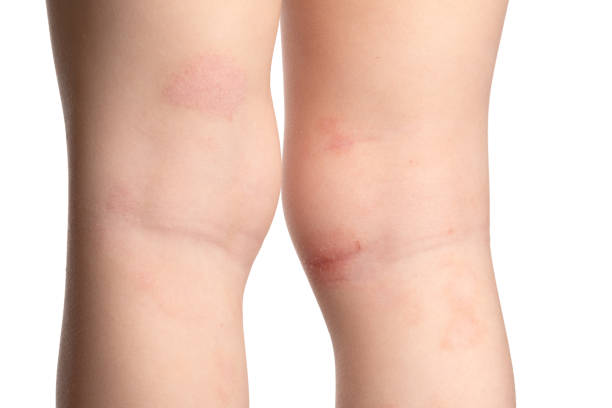
Fungal rash in babies is mainly caused by irritated skin or wet skin. It is highly contagious, and babies can contract it from other people.
The most common type of fungal rash in babies is yeast infection.
You can identify fungal rash by the pink, ring-like, and flaky patches that pop from anywhere around the skin.
Using an antifungal cream or oral antifungal medication can reduce the severity of the rashes on your baby.
9. Cradle Cap

In this article, I also discussed cradle caps in babies. It is a complex condition characterized by crusty or oily scaly patches on the scalp. If your olfactory senses are strong, you can get a whiff of oily scent on the baby’s skin.
10. Baby Eczema Rash

Eczema is a skin condition characterized by red patches and red skin that also affects babies. According to research, 60% of all eczema cases develop within the first year after birth.
Eczema symptoms thrive during the evening or when the baby is relaxed. When the symptoms sink in, the baby indulges in non-stop scratching, often leading to bleeding.
Failure to manage eczema early might result in other skin complications such as oozing sin spots and scabbing.
You can manage the eczema symptoms by keeping the baby’s skin moisturized.
If the condition is mild, use a moisturizer to manage the symptoms.
On the other hand, if the baby’s eczema is moderate, you can apply an ointment or cortisone cream.
When Should You Seek Medical Help For Baby Rashes?
At some point, you might be forced to seek medical help instantly. These are some of the instances when you should seek medical help:
- If the rash develops bruise-like lesions.
- When the rash is painful.
- If the rash blisters, oozes, or blisters.
- If the rash does not disappear after a week, it worsens.
- If your baby develops a fever.
- If the baby’s lips and neck glands swell.
- If the baby develops symptoms similar to a cold, such as wheezing.
Bottom Line
We have mentioned that in some instances, the rash symptoms clear on their own after some time. However, your assumptions should never override your parental responsibility and instincts. If the baby develops any concerning symptoms, seek medical help immediately.
